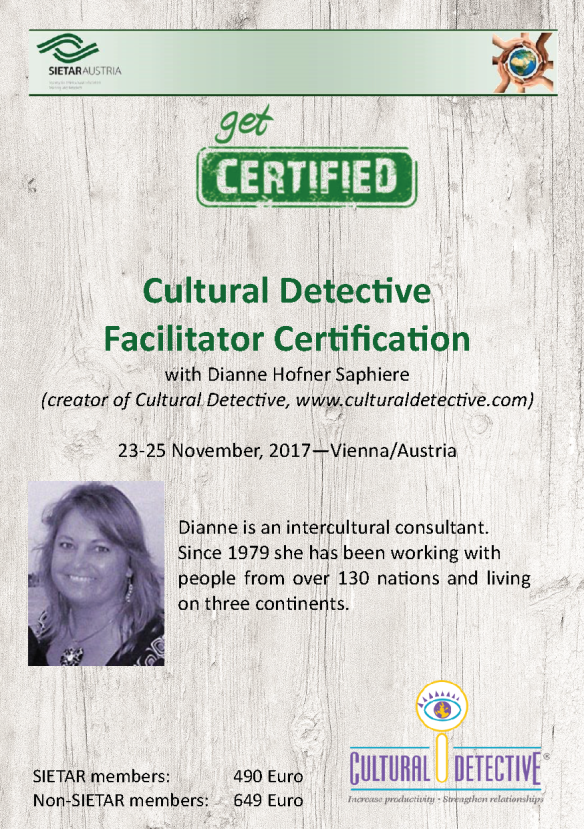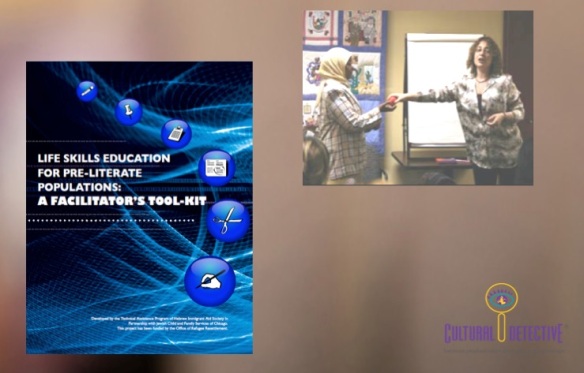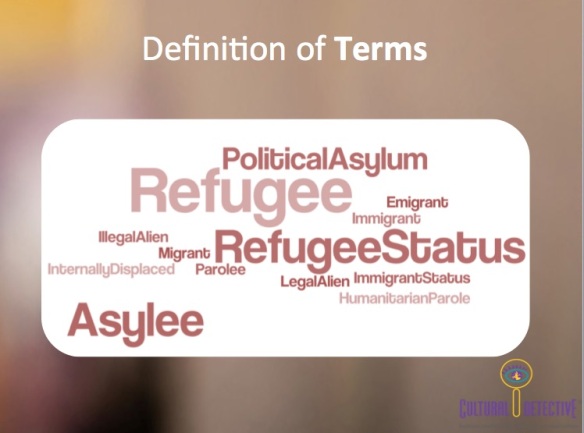Lionel Laroche, co-author of Cultural Detective Canada, is sought-after for his expertise and insight at helping new Canadian immigrants find jobs that use their expertise, education, and experience. He is a popular speaker, educator, author, and consultant. Recently he said to me, “Nearly half of our planet is in lockdown and they are participating in a giant simulation of an immigrant experience.”
Say again? I must admit that until Lionel said this, I hadn’t given a second thought to the parallels between “shelter at home” mandates and the immigrant experience. But he is most definitely on to something! I recently chatted with Lionel about this topic, and share with you the video of that conversation.
The pandemic has meant that rules have changed. At first no one was quite sure what the rules were or how to abide by them. New guidelines for the new reality have to be agreed upon, just as they do in multicultural teams, and we have to teach these new practices so that we can succeed together. We frequently hear both those sheltering at home and immigrants say things like:
- “I’m missing ____ (my favorite meal/my friends and family).”
- “I can’t ____ (eat out, exercise, go to the movies or a concert).”
Gratefully such needs can result in new and wonderful innovations: online concerts, museum tours, and celebrations with friends and family, to name just a few.
Many of those at home now are either not working or are doing so with diminished hours, earning less than they are used to. What immigrant hasn’t experienced unemployment or under-employment? Talk about taxing one’s creativity; try putting a meal on the family table without an income.
Immigrants and those sheltering at home go through a transition process, a learning and adaptation process. Change—living with what is new and different—can bring on anxiety, lack of confidence, and the loss of feeling competent. Both immigrants and those confined to home experience culture shock. We have had to learn new vocabulary and new ways of connecting during physical distancing. For many, it’s been their first time on Zoom or Google Hangout. Before we left home, or before we became confined to home, we didn’t know we’d need to learn so much, or that so many aspects of our lives would change so quickly and perhaps permanently!
We try to find or create a new rhythm, a new comfort zone within this new reality. None of the rules by themselves are showstoppers, but there are so many to learn that there is a loss of personal efficiency. As an immigrant, I knew the codes back home, but not here, not during the pandemic. In my former life I may have been a highly respected professional. But now, it may take me five times as long to do something from home as it would have taken me to do that back at my workplace. It’s frustrating. It’s a constant learning curve. It brings frequent doubt, second-guessing, and can lead to irritability. Thus, we have seen heartbreaking increases in domestic violence and mental health problems.
Immigrants who are technical professionals may think their work is universal; science is science, math is math. They may think they are doing a good job, as measured by their home country standards, but in their newly adopted home they use different criteria to measure performance. The experience is quite similar for those working during stay-at-home orders. So many are learning the new rules of working remotely: how to dress appropriately, how to check in with the boss remotely, how to partner with their team across physical distance, how to teach online. Some of us adapt while kicking and screaming, others grin and bear it, still others rejoice at the opportunity.
What Can We Learn From the Migrant Experience to Help Us Through Survive COVID-19?
Lionel shared with us five characteristics that make the difference between successful and unsuccessful immigrants. Most of these are also among the twelve Cultural Detective Best Practices. Here is his list:
- Drive: Keep trying, don’t give up. We may be overwhelmed in many ways from Skype, FaceTime, MS Meetings, to shops closed so we have to order delivery from groceries and restaurants. It can seem to be more than we can manage, but we need to find our groove, maintain our mental health, and keep going.
- Adaptability: Those who drive without adaptability are those who keep sending out the same resume even though they had no response the first 300 times they sent it. We all do this; insanity is trying the same thing over and over and expecting a different result. Some of us pick up more quickly than others. Adaptability keeps us happier and more successful.
- Positive attitude: Easier said than done; we all have down days. How we complain also varies by culture. In Canada, Lionel tells us, you can complain endlessly about the weather; otherwise, you best keep complaints to yourself. The wise will find emotional outlets with family, friends, or a counselor.
- Sense of ownership: We can’t do anything about the virus, but we can manage how we respond to our circumstances. Those with a sense of ownership will learn or do something new during quarantine and come out stronger on the other side.
- Ability to see the world in shades of grey vs. black and white: When people move from one country to another, feeling that there is one right way of doing things is a recipe for disaster. Culture, by definition, means there is more than one way to get to the same result.
I asked Lionel if he has any advice for diversity and equity professionals, interculturalists, and social justice practitioners during this pandemic. He shared two thoughts:
- Don’t start from the premise that diversity is inherently good and will bring good results. Diversity is a double-edged sword that brings benefits and challenges. The challenges come first and the benefits later. For the average front-line manager, diversity is a pain in the butt. We need to give our customers the benefit of the doubt the way we teach them to do. Intercultural competence is needed to harvest the advantages of diversity.
- There is an inverse correlation between unemployment and people’s ability to accept differences. The higher the unemployment rate, the less people accept immigrants on a societal level. People’s ability to welcome and be inclusive diminishes. Thus, professionals need to recognize where people are and deal with it, meet them there. The pandemic has aggravated so many societal inequities and injustices.
Please, share with me in the comments similarities that you see between these two experiences. How might we reflect on our pandemic experience and use to to build empathy and understanding of the immigrant experience? How might we use this opportunity to develop our intercultural competence?


 Seven success values and the immigrant women who cultivated them by Fiona Citkin, due to publish in December 2018 by a Simon & Schuster affiliate
Seven success values and the immigrant women who cultivated them by Fiona Citkin, due to publish in December 2018 by a Simon & Schuster affiliate

 There are over 20 million refugees in our world, according to UNHCR. The AVERAGE length of time a refugee spends in a camp—in limbo, in transition, waiting—is 17 years; not months: YEARS!
There are over 20 million refugees in our world, according to UNHCR. The AVERAGE length of time a refugee spends in a camp—in limbo, in transition, waiting—is 17 years; not months: YEARS!
 Then there is the statelessness. Most refugees are forced to abandon their citizenship when they emigrate. Since, on average, they wait 17 years before finding a new home, that’s an awfully long time not to “belong” anywhere! Then there is the concept of time, of waiting, of living in limbo. If a child has been raised in a refugee camp, or an adult has lived in one for years, and now in a new home has to keep timely appointments and behave proactively, it’s a HUGE cultural shift we’re expecting. The countries that receive the most refugees are often not the countries in which the refugees will live long-term; they are transit countries. This means that the refugees go through waves of transition and re-acculturation.
Then there is the statelessness. Most refugees are forced to abandon their citizenship when they emigrate. Since, on average, they wait 17 years before finding a new home, that’s an awfully long time not to “belong” anywhere! Then there is the concept of time, of waiting, of living in limbo. If a child has been raised in a refugee camp, or an adult has lived in one for years, and now in a new home has to keep timely appointments and behave proactively, it’s a HUGE cultural shift we’re expecting. The countries that receive the most refugees are often not the countries in which the refugees will live long-term; they are transit countries. This means that the refugees go through waves of transition and re-acculturation. ACTIVITY
ACTIVITY
